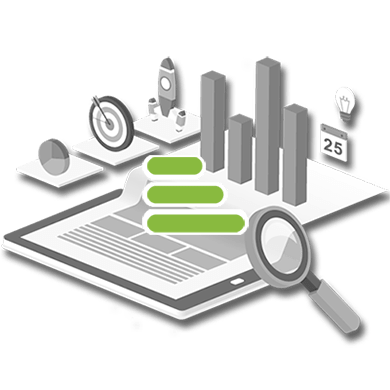Qlik, Power BI and Tableau are leaders in BI and data integration according to Gartner report. Each tool has many benefits. However, in order to make the right choice, it is necessary to clearly understand business needs, its tasks and goals, as well as a potential value of BI introducing into different departments workflows, etc. By understanding the business needs and knowing the capabilities of each tool, it is easier to make the right choice.
Comparison of 12 key factors of Qlik and Tableau
- Data visualization – data visualization using interactive charts, graphs and maps. This allows to study data in detail in any direction, identify relationships, etc.
- Qlik: has a complete set of interactive visualizations. The associative mechanism allows the user to explore data from all directions while machine learning helps to identify new ideas for data exploration and offers new visual effects;
- Tableau: also provides a full range of visualizations but using a query-based approach. This approach limits the user to linear possibilities within a specific data piece, that makes it impossible to explore data from different angles;
- Interactive dashboard – the ability to create dashboards for more convenient and free data study.
- Qlik: offers the ability to work freely with data using a dashboard. Machine learning makes dashboards more powerful by compressing large datasets and revealing data shape;
- Tableau: allows to connect charts to create a dashboard. The SQL-based approach limits filtering and exploration to the queries and dataset that were chosen by the original author;
- Total cost of ownership (TCO) – accounting for all costs associated with BI solutions usage for 3-5 years (infrastructure, system configuration, application development, system administration and support).
- Qlik: lower cost and no hidden costs as you scale;
- Tableau: the need for investments as you scale;
- AI-driven analytics – new insights and connections discovering, quickly data analyzing, team productivity increasing, informed decisions based on data.
- Qlik: has a full range of AI capabilities built into the platform. AI is a constantly included mechanism in the context of the analysis performed and offers new ideas and connections;
- Tableau: Ask Data (an AI feature) is not a core platform and was added to the tool later. There is no possibility to work with business logic built into workbooks; connection only to data sources, that makes it impossible to use the knowledge gained by analysts;
- Different use cases (on the same platform) – many use cases for BI, working with the same data and platform.
- Qlik: Users have the ability to do everything, including real-time analytics, application automation, Auto ML, alerts and reports, on one platform;
- Tableau: mainly it’s a development environment for analysts to visualize data;
- Managed self-service – data and content control with centralized rule-based management and unlimited user power.
- Qlik: data centralization and consolidation in the cloud, creation of managed data models with reliable protection. Content creation, management and control takes place in the cloud. Managed libraries enable reuse and standardization of analytics;
- Tableau: The user has the ability to create copies of the content. However, managing such iterations takes a lot of time and effort;
- Mobile business intelligence – the ability to explore and analyze data from any location.
- Qlik: native mobile application offers interactive exploration (online and offline) and built-in alerts with push notifications;
- Tableau: the ability to download only 1 sheet from the workbook to a mobile device, there is no filtering option.
- Scalability – complete and up-to-date presentation of data, processing it at any scale without affecting performance and increasing costs, data integrating and combining from different sources.
- Qlik: instant computing performance, including when working with large datasets, real-time data and a large number of users;
- Tableau: slow processing of large data volumes and disparate data, inability to maintain data relevance;
- Embedded analytics – the presence of full analytical capabilities in other processes, applications and portals in the company for effective decision-making by employees, partners, customers, suppliers etc.
- Qlik: the ability to embed a dashboard and individual numbers, values and metrics;
- Tableau: the ability to embed only the full dashboard, but not individual values;
- Data integration – combining and transforming raw data into data ready for analysis. Modern tools allow to make data available to the entire company using real-time integration technologies (data capture, streaming data pipeline).
- Qlik: better data integration capabilities to combine, transform and catalog data;
- Tableau: 2 tools (Tableau Prep and Tableau Desktop) provide data preparation. Each product solves a specific problem, however, none of the 2 solves all problems;
- Flexible deployment – an independent multi-cloud architecture that will allow deployment in any environment.
- Qlik: complete data freedom and control, full SaaS enterprise environment, on-premises and private cloud options;
- Tableau: no hybrid option;
- Data literacy – improving the information literacy of employees at all levels, the ability to work with data and make decisions based on them.
- Qlik: the ability to explore data for a user with any skill level, as well as data literacy training for any user;
- Tableau: the user must be an author to work with data and benefit from initiatives.
